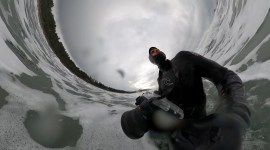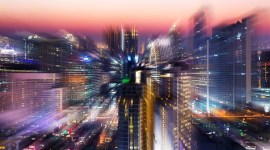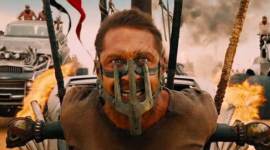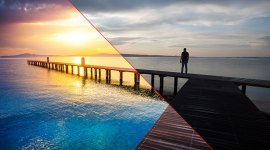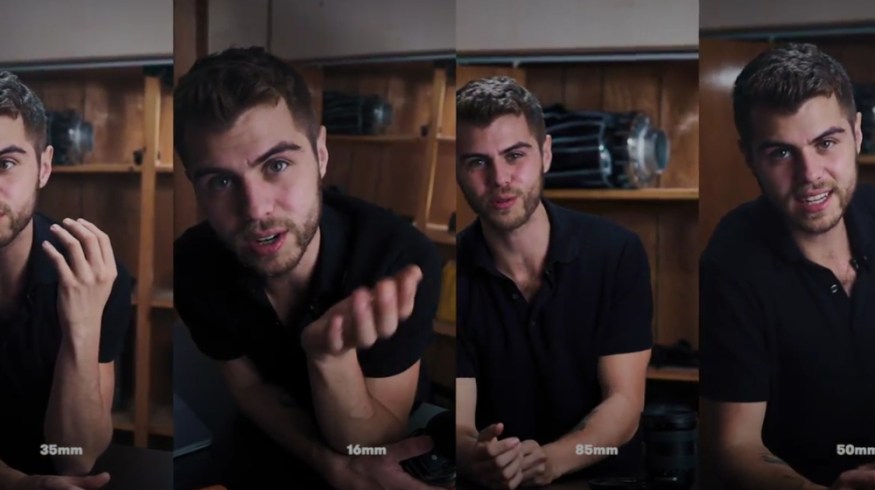
A Guide for Choosing the Best Lenses for “Talk to Camera” Videos
From YouTube to vlogging, let’s dive into the technical side and basic aesthetics of “talk to camera” video lenses.
In today’s video, we’re talking about the best lenses for “talk to the camera” videos. Do you shoot on a wide-angle or medium-angle lens? With a cinema lens or a telephoto lens? What looks and works the best? And, is there a right lens for these types of shoots? Today, we’ll dive into the technical side of this issue, as well as personal preferences. Watch the video, then read the transcribed version that follows in the article below.
So, let’s start with the first and most common lens…
16mm
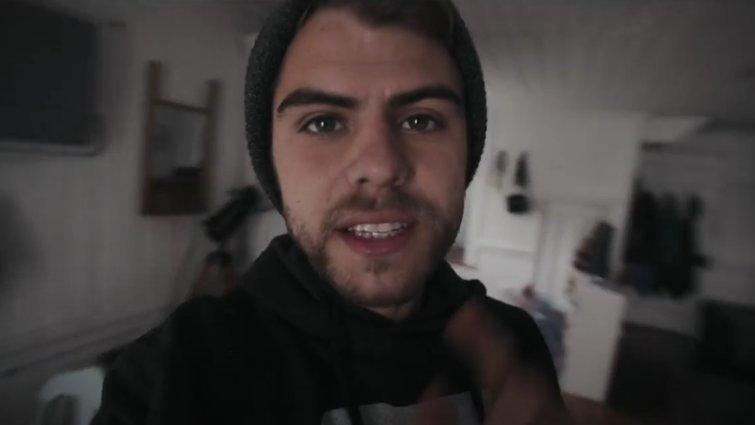
Each focal length that we’ll be talking about has a different vibe and flavor, and with each flavor, a different association. However, let’s begin with the 16mm.
The 16mm is an ultra wide-angle lens, which can be kind of difficult to shoot with in certain spaces. For example, if you’re shooting in a location that doesn’t look good, you’ll have to manipulate the camera position and angle. And, while it’s one of the most common lenses for YouTube, sometimes it’s a bit too wide, creating an obscure angle that’s not commonly seen for “talk to camera” videos.
When people watch TV or movies, they rarely use a wide-angle for the “talk to cameras” because it’s not as flattering. And, that means whoever is talking will be really close to the lens. So, if you’re doing an interview or anything with a client, 16mm might not be your friend. However, shooting on a little bit tighter one—like a 35mm—might be a better choice.
A lot of us have a microphone on the top of our camera, therefore, the camera is nice and close and so is the microphone. What that does, though, is distort the face. Things look kind of wonky and weird. So, while the 16mm is good for vlogging, it’s not necessarily the most flattering lens, nor is it the most comfortable to be in front of.
But, it does create an obscure effect. If you’re filming in a small space, its wide-angle allows for more of that space to be captured. If you’re filming in a cool-looking space, it’s quick, dirty, and great to capture everything. It’s also a really good focal length to guarantee you’re in frame, which is another reason why it’s one of the most popular lenses—if you’re shooting ultra-wide, you’re definitely in frame. As a result, you don’t need to constantly check the monitor because you know this area is in frame. This is where the 16mm reigns supreme.
So, if you want a little bit of an intimate, somewhat obscure, vlog-style flavor, the 16mm is the one for you.
Now, let’s jump to the 35mm, which is going to give you a little bit more of that cinematic comfort we’re all used to seeing.
35mm
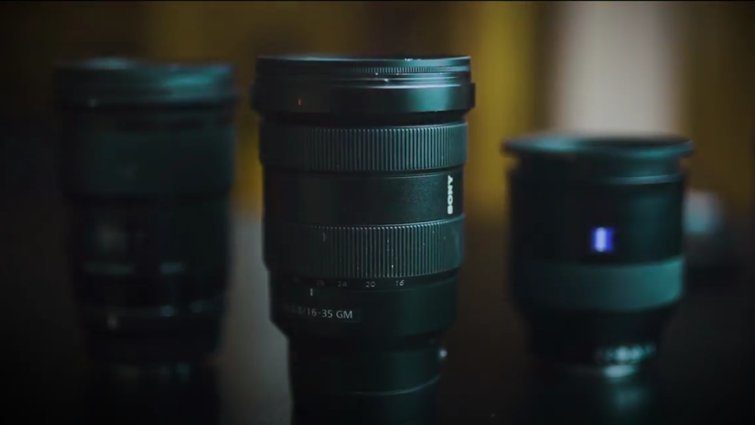
I actually think this is probably one of the best focal points for doing the YouTube “talk to camera” format. The reason why is simple. The camera plays at a distance that’s not too far away. It doesn’t feel too vicarious. Nor does it feel too cinematic, which you might start to get with the 50mm. With this one, the camera still has a bit of closeness. It actually feels like the same focal length that you’d have if you were talking to a person. You’re also getting a nice distance.
So, if you’re doing YouTube, or even interview-style, the 35mm will create a more personal, realistic, and comfortable vibe. It’s the perfect distance. However, if you’re filming someone, this camera is still pretty close. So, for those who feel a little less comfortable that close to the camera, maybe you want the camera a little bit further away. Personally, I feel that this distance makes it feel like I’m actually talking to a person. So, even as talent on screen, it has a certain comfort to it. So, with this focal length, it’s probably one of your best for YouTube, as well as for tutorials. It’s a bit more cinematic in style and you can also bring it out with your 16-35mm lens, if that’s an option. And, while it’s versatile, it’s not my favorite looking one.
Let’s hop into my favorite looking “talk to camera” setup—the 50mm-—which is a lot more cinematic.
50mm
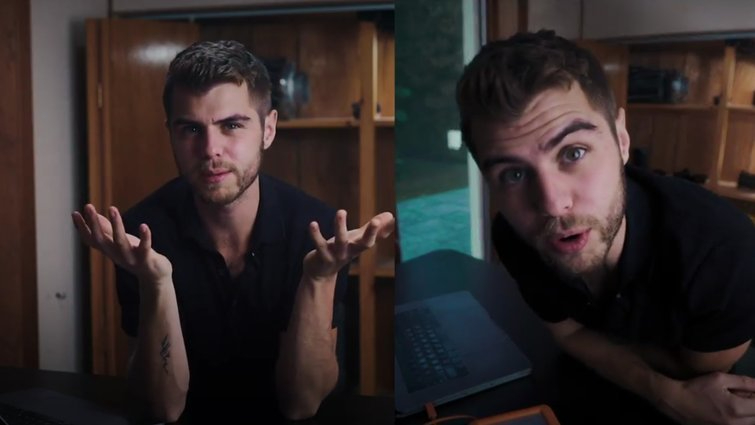
Personally, if I’m ever shooting a movie with a “talk to camera” sequence, I’ll be shooting it on a 50mm. It’s the most flattering for people on screen, yet distant enough so that people don’t feel like the camera is in their face. And, because the camera is so distant, you’ll have to project more and talk louder, even when wearing a lavalier.
Technically, I love what it does with the background. It compresses the frame enough, so you’re getting a little bit of distortion, but it’s putting more into the background and making it feel a lot richer.
The problem with the wide-angle is it was showing almost too much. (I had to do some awkward framing so you didn’t see my ugly basement.) And, if you don’t have a big background space in your set, or the YouTube studio you’ve always wanted, shooting on a tighter lens can help you with capturing that small space.
Those who can afford the big sets will shoot on bigger, wider lenses. That cuts across to cinema, as well. If I’m shooting an indie film and the location isn’t optimal, I’ll throw in an 85mm or a 50mm. The idea holds true for “talk to cameras” in the background. I’ll throw on that 50mm and immediately it looks stunning, and I don’t have to worry about dressing the entire background frame.
So, for cutting corners and actually just getting a beautiful, cinematic image, this is the best lens. You’re not getting a weird distortion and it’s one of the best looking lenses for capturing faces.
Now, just for fun, let’s throw in an 85mm lens, and talk about what that feels and looks like.
85mm
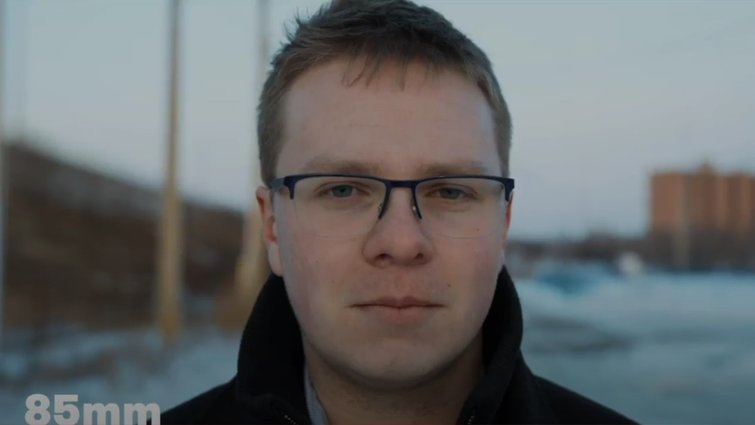
With the 85mm, it feels like you have to yell for anyone to hear you. It’s like the camera is on the opposite side of the room, which is why it’s probably one of the worst focal lengths to film for YouTube and “talk to camera” videos. One, the camera is extremely far way. Two, you need a super large room to film in. Three, it feels like you’re shooting on a telephoto.
The 85mm and telephoto lens are perfect for filming behind-the-scenes moments and nature documentaries, creating a really crisp, beautiful image. However, for “talk to camera” projects, it doesn’t work well because of the distance, creating an awkward feeling between the person behind the camera and the viewer. The 85mm is meant to capture the details of a shot—-people’s hands moving, facial expressions, etc. However, for doing YouTube videos or vlog work, this type of focal length is inconvenient.
Lens Recap
So, from top to bottom, I’d say the 35mm is the best for shooting YouTube videos. It’s not too close. It’s not too wide. The 50mm is definitely the cleanest and richest shot. And, the 16mm makes people feel like they’re watching a YouTube video or vlog, and works nicely as a run-and-gun. But, if you want to try doing something ridiculous, something that stands out from the crowd, go with the 85mm.
Thank you for tuning in. And, whatever your lens of choice, have fun with it!
For additional filmmaking tips and tricks, check out these articles below:


